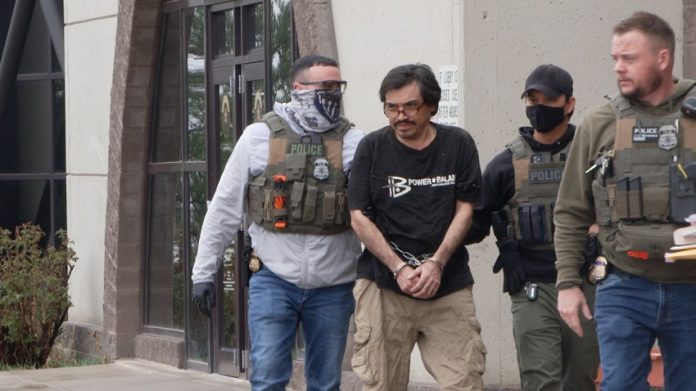JEFFERSON COUNTY, Colo. — A man who was recently released from the Jefferson County Detention Center found himself back in handcuffs Sunday morning, but this time, in the custody of U.S. Immigration and Customs Enforcement (ICE).
Ignacio Cruz-Mendoza, 47, a Mexican national, was apprehended by ICE agents in the detention center’s lobby just before 8:30 a.m. on Sunday. Exclusive footage captured by Scripps News Group showed Cruz-Mendoza being escorted out of the facility and placed into the backseat of a vehicle.
Cruz-Mendoza, who was involved in a deadly crash on Highway 285 near Conifer in June 2024, had recently served a sentence of about one year in jail after pleading guilty to charges stemming from the incident. The crash, which occurred when Cruz-Mendoza was driving a semi-truck, claimed the life of one man and left several others injured. He was convicted on one count of careless driving resulting in death and three counts of careless driving resulting in injury.
Federal authorities were quick to highlight Cruz-Mendoza’s immigration status, with ICE confirming that he was in the U.S. illegally at the time of the crash. According to ICE, Cruz-Mendoza had been ordered to leave the U.S. several times over the years but had repeatedly returned. Since 2002, Cruz-Mendoza had been removed from the United States 12 times and voluntarily returned to Mexico four times.
“If we weren’t here, this person would have been released back into the community of Denver,” said Robert Guadian, the ICE field director for Colorado. Guadian’s remarks reflect concerns about the potential public safety risks posed by individuals in the U.S. illegally, particularly those with a criminal history.
Following his detention on Sunday, Cruz-Mendoza was taken to the ICE Denver Contract Detention Facility, where he will remain pending his deportation.
The operation to apprehend Cruz-Mendoza, though successful, was not without complications. Guadian pointed to the logistical challenges created by Colorado’s policies, which prevent local law enforcement from directly transferring inmates to ICE custody inside the jail. As a result, federal agents are often forced to wait outside detention centers or in parking lots, a process that not only consumes time but also diverts resources from other enforcement activities.
“We’d rather be in the jail. Making a safe and secure transfer of custody takes people off the line and removes agents and officers who could be focused on other enforcement activities,” said Guadian.
Cruz-Mendoza’s case underscores the ongoing challenges faced by ICE and local law enforcement when dealing with individuals who repeatedly enter the country illegally, especially those who have criminal convictions. While the federal government continues to manage the deportation process, the coordination between local and federal agencies remains a point of contention, especially in states like Colorado with policies that restrict the direct transfer of inmates to ICE.
As Cruz-Mendoza’s deportation process unfolds, it raises broader questions about the intersection of immigration enforcement, criminal justice, and public safety in the U.S.



